Riga is the largest city in Latvia and in three of the Baltic countries, and a visit here is like coming to a major European metropolis with everything that you can imagine, i.e. sights, churches, culture, events, cafes, gastronomy and shopping.
The old town, with cobblestones in the streets, churches in brick gothic, fine museums and well-preserved buildings from the last many centuries, is a very cozy neighborhood. There is an abundance of beautiful buildings here, and it is a nice area just to explore with the narrow streets and tiny alleys.
The ring of former moats and defence walls encircle the old part of Riga like a green belt, complementing walks along the river Daugava in recreation value. The area of the former bastions were laid out as parks and in the decades around 1900, many stately buildings were constructed here.
Outside the old fortified areas, Riga is spreading into several modern neighborhoods, and this is also where you will find some streets with Europe’s highest concentration of beautiful Art Nouveau houses from the years and decades around the year 1900. Several streets stand almost as huge museums by themselves as a great example on the urban development in contemporary Riga.

The name Trīs brāļi covers three beautiful neighboring houses, which are the oldest preserved dwellings in Riga. The houses are from the 15th and 1600s and the houses stand as very fine examples of medieval architecture.
The Cathedral of Riga was founded in 1211 and is Latvia’s largest church. The altar is the oldest preserved from the Romanesque church, while the subsequent styles are also seen. The church tower was built in baroque style in 1776.
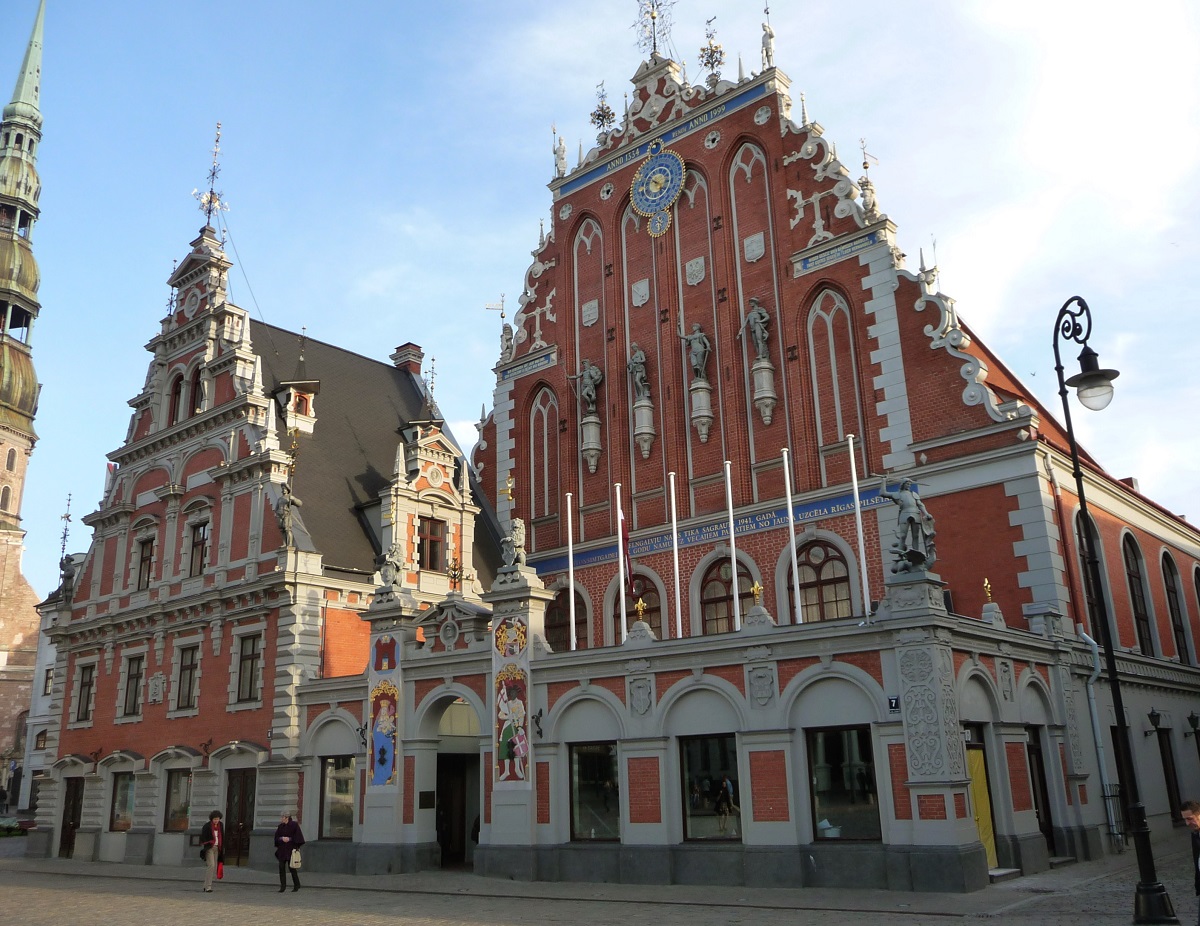
The beautiful and magnificent building, Melngalvju nams, was originally built in 1344 by the Riga merchant guild. The house was destroyed during World War II, but rebuilt for Riga’s 800th anniversary in 2001.
Riga Town Hall Square is the city’s ancient center of commerce and civilian life for centuries. On the square you can see the city’s Roland statue, Riga’s beautiful town hall and some fine gabled buildings.
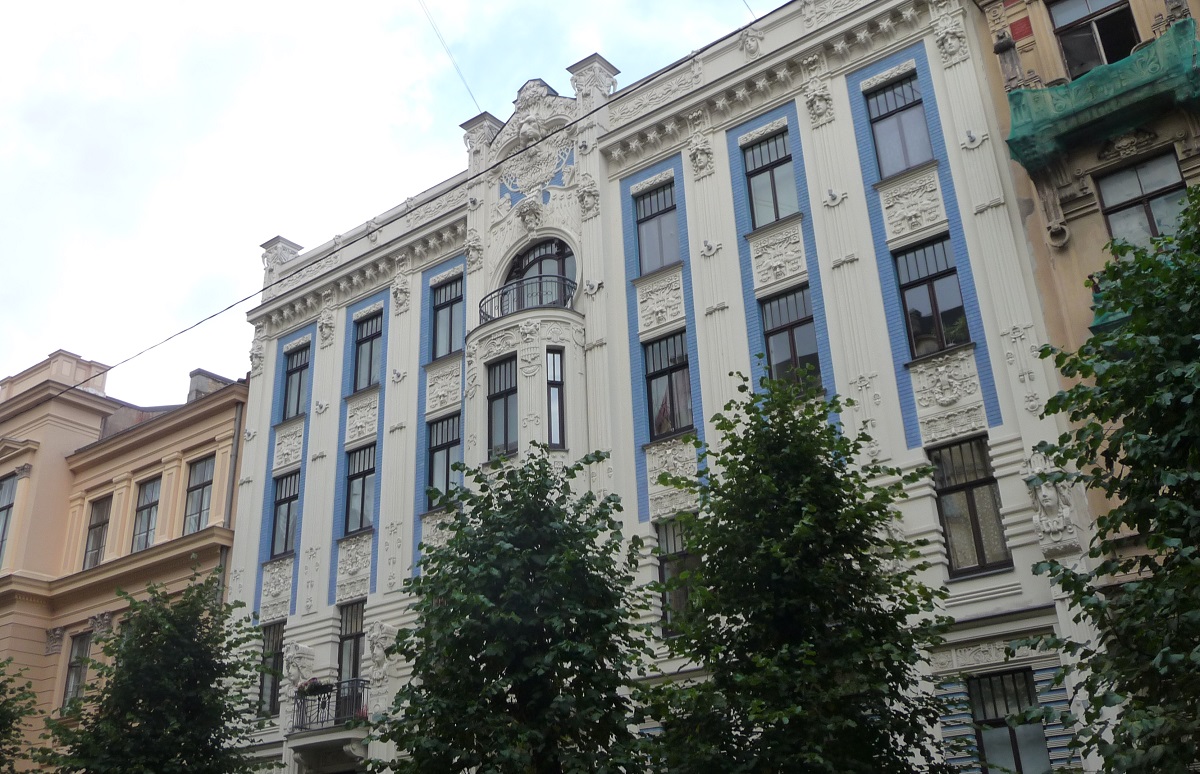
Art Nouveau is one of the hallmarks of Riga, and in the Latvian capital there are more buildings in this architecture than in other major cities in Europe. They are a delight to the eye and can be seen, for example, in the street Alberta ielā.
Saint Peter’s Church is one of the large, ancient churches in the Latvian capital, and with its tall, slender tower, the church is a characteristic part of Riga’s skyline, and from here there is a fine view of the city.

This is Riga’s impressive Russian Orthodox cathedral. It was built in the years 1876-1884 in a typical Byzantine style with five gilded domes.
This monument was designed by the Latvian artist Kārlis Zāle and erected in 1935. The statue is a symbol of the country’s freedom, and soldiers stand guard at the monument.

The Powder Tower is the only surviving of the 27 fortress towers built into Riga’s defensive walls around the medieval city center. Close to the tower you can see a preserved part of the large city walls.
Lielā Ģilde was originally the town’s merchant guild building. The house was built in 1354 and completely rebuilt in 1854-1857. Now the building stands in English Tudor style with beautiful interior and is home to the country’s symphony orchestra.

: Rīga Castle is a large structure built in 1330-1353 by the Livonian Order. The order used the castle as a residence, and today it is open as both a museum and serves as the office of the President of Latvia.
Since 1760, there have been regular ballet performances in Riga theaters. Over time, the desire for an actual opera and ballet building grew, and the current building opened in 1863.

Kaķu māja is a large building crowned by two black cats on each tower of the house. The cats have made the house one of Riga’s most famous, and the cats were reportedly set up by a grocer who had been excluded from the merchants guild.
Freedom Boulevard is one of Riga’s main streets. It was the street that was historically the road to Russian Pskov. Today you can see some of Riga’s newer sights along the boulevard.
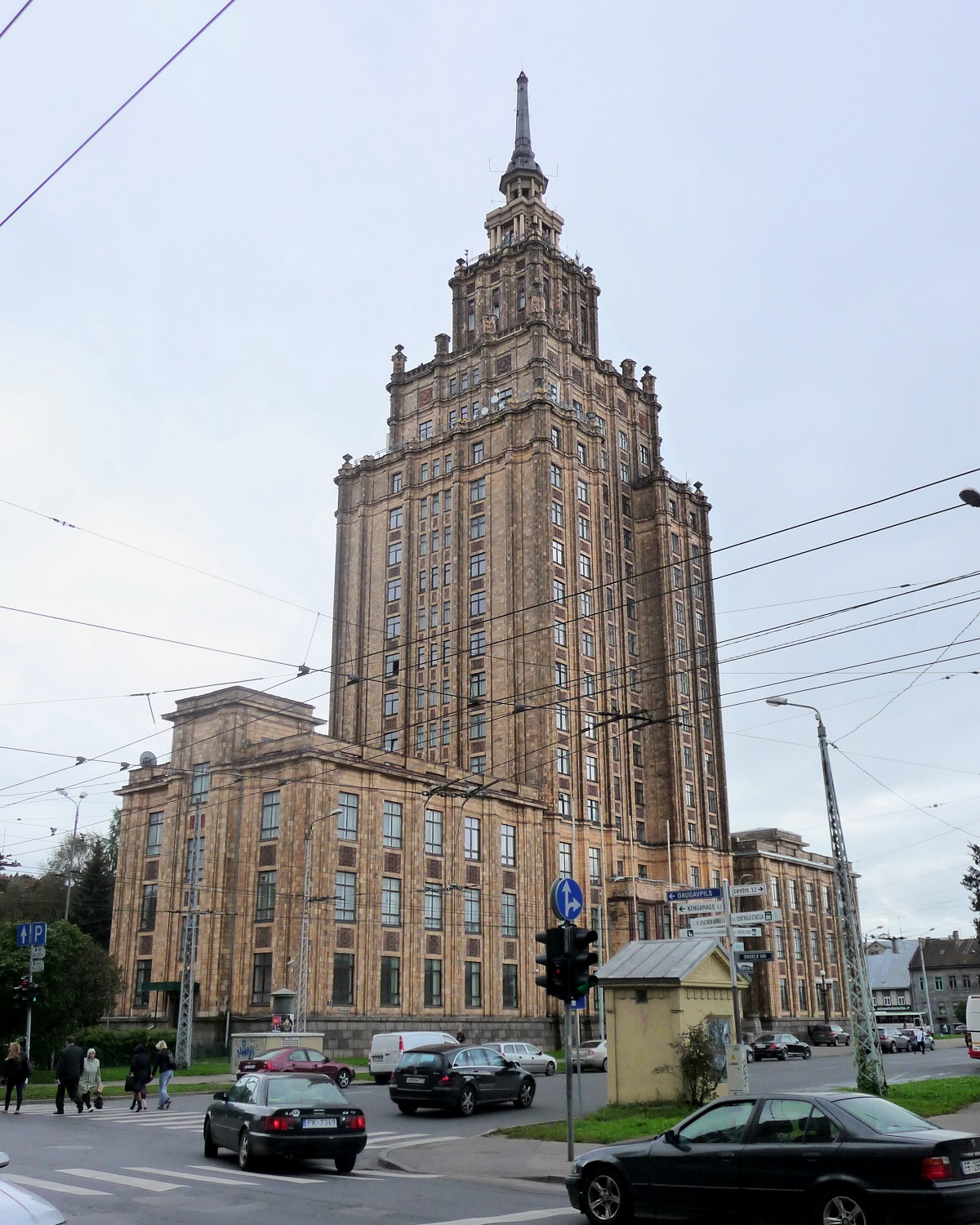
The Latvian Academy of Sciences is housed in one of Riga’s most distinctive buildings. The building from 1957 is clearly inspired by the so-called seven sisters in Moscow, all of which were built in the Stalinist Gothic style of the time.
There is a belt of parks around Riga’s old town, and in them there are beautiful lakes. These are the remains of the city’s former defense ring with bastions and moats. To the north in the defense works was the city citadel, which is also newly built but with some preserved military buildings.
This is a beautiful church that stands in the street in mainly baroque architectural style. The church was built 1778-1786 as the third church on this site.

The Central Market is the name of one of Europe’s largest markets, and here, in addition to the market atmosphere, you can see Riga’s colossal market halls, which were built as zeppelin hangars before the First World War.
This car museum is quite interesting, due to both the bombastic museum building, which is designed as a large radiator grille, and the fine collection of cars that can be seen. Here are cars from Soviet times; you can see Stalin’s limousine and many other cars.
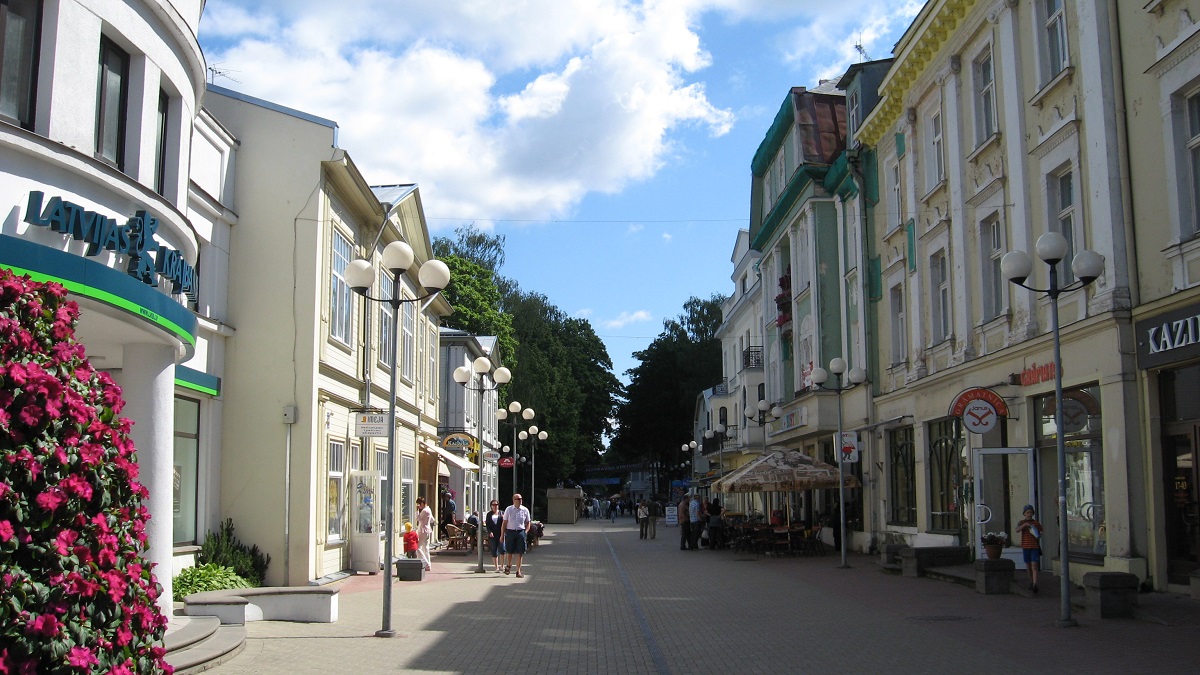
Along the Gulf of Riga west of the capital you can visit Jurmala, which is a 33 km/20 mi long sandy beach with a pearl row of cozy, small towns along the coast. Here there are lots of exciting activities and beautiful streets.
Jelgava is one of Latvia’s most exciting provincial towns and has been the capital of the Duchy of Courland. Jelgava is known for Bartolomeo Rastrelli’s large 18th century baroque castle and Academia Petrina.
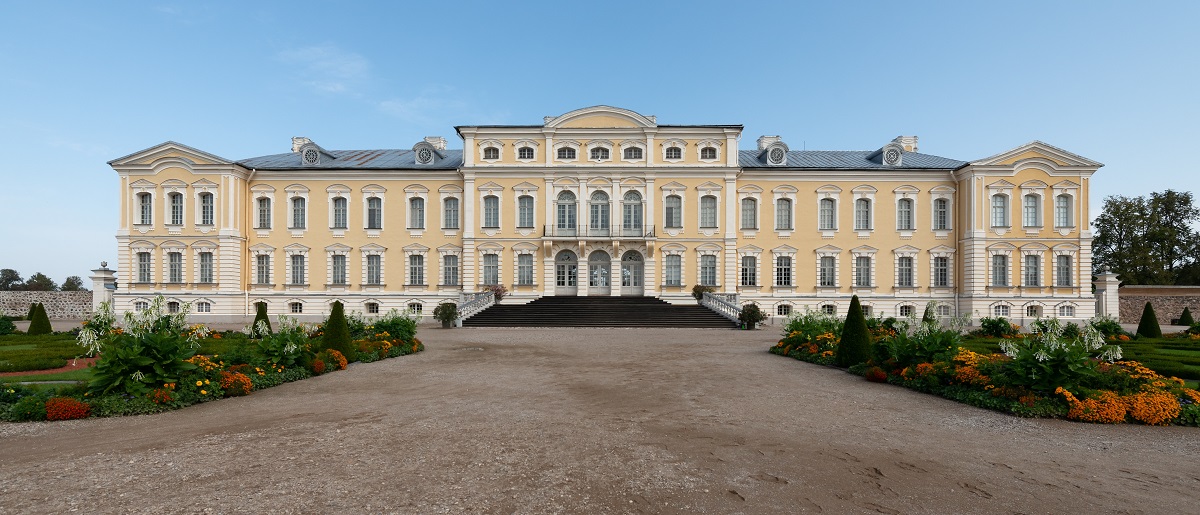
Rundāles Pils is one of the absolute beauties among the castles and palaces of the Baltics. It was designed by Bartolomeo Rastrelli and is an elegant Baroque palace with an impressive park. The palace was built in the 18th century and is today a museum.
The town of Bauska dates back to the 13th century and is a town where you can see buildings from much of the following period. There are, for example, several old wooden houses from the 18th century, and in the streets you can see several interesting churches. The ruins of Bauska Castle are also worth seeing.
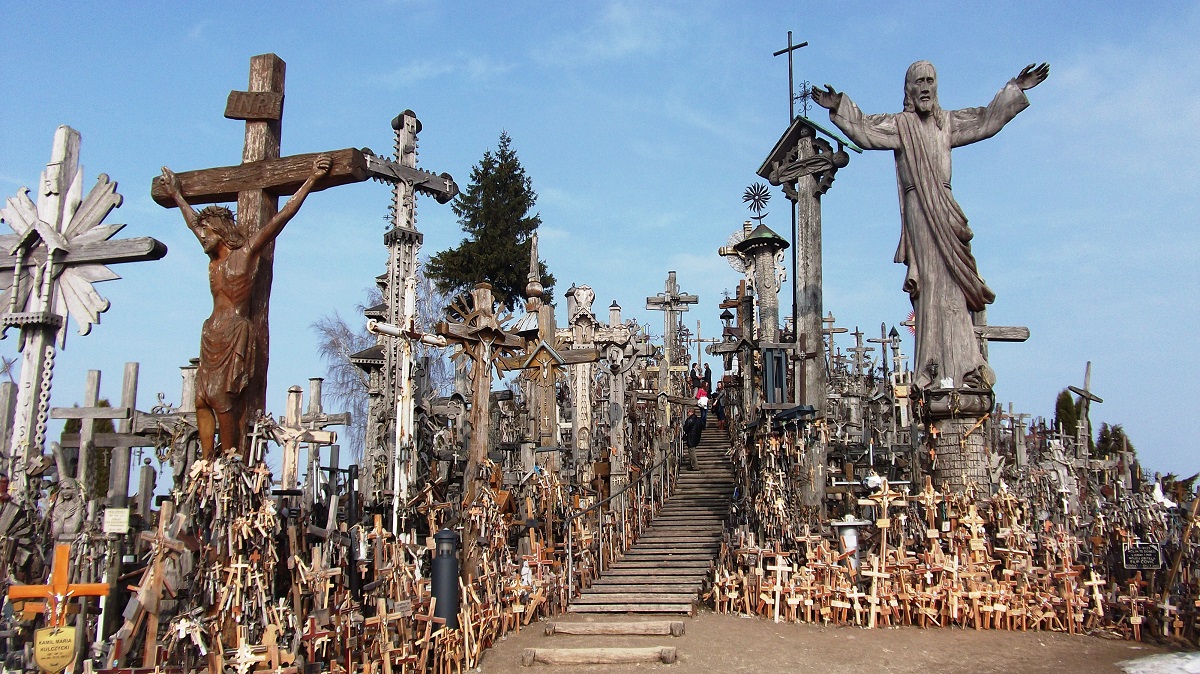
Kryziu Kalnas is one of Europe’s most peculiar yet impressive sights. In the area of the two hills, crosses have been put up here since the 1300s; all with a background in faith. Some are made to commemorate the deceased and others are put up for prayer.
The town of Sigulda is located at the entrance to the Gaujas Nacionālā Parka National Park. Thereby, Sigulda is close to beautiful nature and many opportunities for activities such as hiking and trying a bobsled track.
Brivibas ielā 372
alfaparks.lv
Basteja Bulvāris
bastejapasaza.lv
Centrāltirgus ielā
rct.lv
Ieriķu ielā 3
domina-shopping.lv
Audēju ielā 16
galerijacentrs.lv
Krasta ielā 46
linstow.lv
Stacijas laukums 2
origo.lv
13. Janvāra ielā 8
stockmann.lv
Audēju ielā, Brivibas ielā, Krišjāņa Baronas ielā
Latvijas dzelzceļa muzejs
Uzvaras 2/4
railway-museum.lv
Latvijas Dabas Muzejs
Krišjāņa Barona ielā 4
dabasmuzejs.gov.lv
Lido Center
Krasta ielā 76
ac.lido.lv
Līvu Akvaparks
Vienības gatve 36
akvaparks.lv
Riga Motormuzejs
Eizenšteina ielā 6
motorsmuzejs.lv
Rīgas Zoodārzs
Meža prospectus 1
rigazoo.lv
Before the founding of the Riga itself, the Daugava River was a frequently used trade route used by the Vikings, for example, on their trips to Byzantium.
The naturally occurring location of a river port 15 kilometers up the Daugava from Riga Bay resulted in the first settlement of the tribal livers in the 100s. It was fisheries and agriculture that dominated until the trade grew, among other things, the increased activity of the Vikings.
The settlement also grew with the arrival of German traders. They set up a trading station with the resultant flourishing in the area. With the Germans also came the monk Meinhard of Segeberg, who sought to Christianize the pagan lives. Meinhard established a monastery in 1190, and it was part of the city formation at that time.
In 1199, Albert was appointed bishop of Riga, and he arrived in the city the following year with 23 ships and about 500 crusaders to secure Christianity that had not won the desired place in the 1100s.
In 1201, Albert founded the city of Riga, and the year after the ecclesiastical order of war, the Order of the Swords, which was open to the nobility and the merchants, aimed at Christianizing the pagan people of the area. Five years later, the bishop of established defenses around Riga began, and by introducing a division of land between the church that ruled in Riga and the members of the Order of the Swords, the military presence was strengthened rather than the normal situation with hired order knights returning home.
In addition to military strength, Bishop Albert also secured Riga’s trading position. Through papal decrees, German merchants’ trade in the Baltic was to pass through Riga, whose economy thereby flourished further.
In 1211, the first coin was minted in Riga, and the same year the foundation stone for the city’s cathedral was laid. In 1221, the Riga grocery store achieved some autonomy over the city, but it went until 1225 before the citizens did not have to pay taxes to the church and were given the right to choose the city’s government themselves. The city was thus a reality with its own constitution.
In 1221, Bishop Albert had sought military assistance from the Danish king Valdemar in protecting the church’s land from livelihood restoration from before the church’s arrival. Denmark gained dominion over the areas of present-day Estonia and Latvia; they landed in Livland, among other things, and established a fort in what became Tallinn. Within a year, the threat had diminished and Albert was able to reign from Riga.
In Bishop Albert’s last year before his death in 1229, he conquered new land to Riga, whose position of power was strengthened. In 1237, Alberta’s sword brother order was dissolved and replaced by the Liveland Order, which was a branch of the German Order. The development was strong, and the city became the archdiocese of 1254.
The ever-increasing trade led to membership of the economic and political cooperation in the Hanseatic League from 1282. Riga was already here a major commercial center throughout the region, and much of the transit trade between Russia and Western Europe also went through Riga.
The Hanseatic League weakened over the centuries, destabilizing the established order and political stability in Riga.
For many years the city was strongly influenced by the church and the ruling Livland Order, but with the Reformation in 1522 the influence of the church lapsed and in 1561 the Livland Order was dissolved.
Riga achieved a brief independence as a refuge in the German-Roman Empire in the years 1561-1581, after which the city came under the Polish-Lithuanian state. In time Poland tried to re-introduce Catholicism as a religion in the Protestant country.
During the Polish-Swedish War in 1600-1629, Riga capitulated to the Swedes in 1621. Sweden gained a city characterized by many years of war. Riga was subject to economic decline, hunger and disease, and the 16th century was marked by a century of stagnation.
The Swedish rule was to the benefit of the Protestant people who shared faith with Sweden. Politically, Riga was granted the autonomy of Swedish King Gustav II, and in 1628 the city was declared the second capital of the Swedish kingdom after Stockholm. Throughout Swedish times, Riga was the largest city in Sweden and its controlled areas.
Riga’s time as a Swedish lasted until the Great Nordic War in 1700-1721, when the Russians fought against the Swedes for access to the Baltic Sea. In 1710, the Russians entered Riga, and the Russian rule was confirmed by the Nystad Treaty in 1721.
When Russian troops under Tsar Peter the Great entered Riga in 1710, it was not only Riga’s future that changed. By the Nystad peace treaty, the whole of Sweden’s Latvian territory was transferred to Russia.
Thus, it was in the 18th century that the contours of present-day Latvia formed. In 1721, the region of Vidzeme became part of Russia, in 1772 Latgale and in 1795 Kurland, after which the entire Latvian area was brought together in the kingdom of the tsar.
In the 18th century, things went well for the city. Riga’s formerly great trade developed anew, and also culturally there was a boom; among others, the city’s first public theater opened in 1782.
In the 19th century, there was considerable economic growth in Riga, which after St. Petersburg had Russia’s largest port, and the city was, among other things, the center of the country’s European timber trade.
The construction of the railway was also of great importance for the strategically well-located city. In 1857, Riga’s defense facilities were demolished, and the development of new neighborhoods around the city center occurred quickly.
Despite centuries of Swedish and Russian power in Riga, more than 42% of the city’s citizens were Germans in the 1860s, and as in the days of Bishop Alberta, the official language of administration remained German. It was not until 1891 that Russian became the official language of the entire Baltic region.
In the decades leading up to the First World War, much was built in Riga, including the many Art Nouveau buildings that are unique in their concentration in the world.
Industrial production was also significant in Riga, a Russian powerhouse. In the 1890s, only Saint Petersburg and Moscow had more industrial workers than Riga.
In the city, the Russian Social Democrats stood very strong, and Riga played a role during the 1905 uprising, facing both the German and the Russian nobility.
The Russian Revolution rolled in 1917, and on September 3 of that year Riga had been occupied by Germany. With the Brest-Litovsk Treaty in March 1918, Riga and the Baltic became German territory, but with the subsequent German defeat the treaty was repealed.
In the aftermath of the World War and the Russian Revolution was an opportunity for an independent Latvia, and it was proclaimed on November 18, 1918. Riga had now become the Latvian capital again for the first time since 1581.
After two decades of freedom, Latvia became part of the Soviet Union in 1940, and Riga now became the capital of the Latvian Soviet Republic. In 1941, Riga was again occupied by Germany. It was an occupation that lasted until 1944.
Throughout Riga’s Soviet era, there was a significant influx of residents from across the Union, primarily from Russia. The city manifested itself as the Baltic’s largest city. Here was a good production and thereby the boom of the economy. The population numbered one million, and thus, as Soviet law prescribed, a subway was drawn to the city, which, however, could not be built until the Soviet Union was history.
In 1988, the first Latvian movements against the country’s independence became a reality, and in 1991 Latvia from Riga was able to declare the independent republic of Latvia with Riga as its capital. Since independence, Latvia has become part of the European Union and Riga has been radically restored.
Overview of Riga
Riga is the largest city in Latvia and in three of the Baltic countries, and a visit here is like coming to a major European metropolis with everything that you can imagine, i.e. sights, churches, culture, events, cafes, gastronomy and shopping.
The old town, with cobblestones in the streets, churches in brick gothic, fine museums and well-preserved buildings from the last many centuries, is a very cozy neighborhood. There is an abundance of beautiful buildings here, and it is a nice area just to explore with the narrow streets and tiny alleys.
About the upcoming Riga travel guide
About the travel guide
The Riga travel guide gives you an overview of the sights and activities of the Latvian city. Read about top sights and other sights, and get a tour guide with tour suggestions and detailed descriptions of all the city’s most important churches, monuments, mansions, museums, etc.
Riga is waiting for you, and at vamados.com you can also find cheap flights and great deals on hotels for your trip. You just select your travel dates and then you get flight and accommodation suggestions in and around the city.
Read more about Riga and Latvia
Buy the travel guide
Click the “Add to Cart” button to purchase the travel guide. After that you will come to the payment, where you enter the purchase and payment information. Upon payment of the travel guide, you will immediately receive a receipt with a link to download your purchase. You can download the travel guide immediately or use the download link in the email later.
Use the travel guide
When you buy the travel guide to Riga you get the book online so you can have it on your phone, tablet or computer – and of course you can choose to print it. Use the maps and tour suggestions and you will have a good and content-rich journey.
Cathedral • City Walls • Art Nouveau • Daugava • Jūrmala
Overview of Riga
Riga is the largest city in Latvia and in three of the Baltic countries, and a visit here is like coming to a major European metropolis with everything that you can imagine, i.e. sights, churches, culture, events, cafes, gastronomy and shopping.
The old town, with cobblestones in the streets, churches in brick gothic, fine museums and well-preserved buildings from the last many centuries, is a very cozy neighborhood. There is an abundance of beautiful buildings here, and it is a nice area just to explore with the narrow streets and tiny alleys.
About the upcoming Riga travel guide
About the travel guide
The Riga travel guide gives you an overview of the sights and activities of the Latvian city. Read about top sights and other sights, and get a tour guide with tour suggestions and detailed descriptions of all the city’s most important churches, monuments, mansions, museums, etc.
Riga is waiting for you, and at vamados.com you can also find cheap flights and great deals on hotels for your trip. You just select your travel dates and then you get flight and accommodation suggestions in and around the city.
Read more about Riga and Latvia
Buy the travel guide
Click the “Add to Cart” button to purchase the travel guide. After that you will come to the payment, where you enter the purchase and payment information. Upon payment of the travel guide, you will immediately receive a receipt with a link to download your purchase. You can download the travel guide immediately or use the download link in the email later.
Use the travel guide
When you buy the travel guide to Riga you get the book online so you can have it on your phone, tablet or computer – and of course you can choose to print it. Use the maps and tour suggestions and you will have a good and content-rich journey.

The Powder Tower is the only surviving of the 27 fortress towers built into Riga’s defensive walls around the medieval city center. Close to the tower you can see a preserved part of the large city walls.
Lielā Ģilde was originally the town’s merchant guild building. The house was built in 1354 and completely rebuilt in 1854-1857. Now the building stands in English Tudor style with beautiful interior and is home to the country’s symphony orchestra.

: Rīga Castle is a large structure built in 1330-1353 by the Livonian Order. The order used the castle as a residence, and today it is open as both a museum and serves as the office of the President of Latvia.
Since 1760, there have been regular ballet performances in Riga theaters. Over time, the desire for an actual opera and ballet building grew, and the current building opened in 1863.

Kaķu māja is a large building crowned by two black cats on each tower of the house. The cats have made the house one of Riga’s most famous, and the cats were reportedly set up by a grocer who had been excluded from the merchants guild.
Freedom Boulevard is one of Riga’s main streets. It was the street that was historically the road to Russian Pskov. Today you can see some of Riga’s newer sights along the boulevard.

The Latvian Academy of Sciences is housed in one of Riga’s most distinctive buildings. The building from 1957 is clearly inspired by the so-called seven sisters in Moscow, all of which were built in the Stalinist Gothic style of the time.
There is a belt of parks around Riga’s old town, and in them there are beautiful lakes. These are the remains of the city’s former defense ring with bastions and moats. To the north in the defense works was the city citadel, which is also newly built but with some preserved military buildings.
This is a beautiful church that stands in the street in mainly baroque architectural style. The church was built 1778-1786 as the third church on this site.

The Central Market is the name of one of Europe’s largest markets, and here, in addition to the market atmosphere, you can see Riga’s colossal market halls, which were built as zeppelin hangars before the First World War.
This car museum is quite interesting, due to both the bombastic museum building, which is designed as a large radiator grille, and the fine collection of cars that can be seen. Here are cars from Soviet times; you can see Stalin’s limousine and many other cars.
Similar to Riga Travel Guide
There are no listings matching your search.
Reset